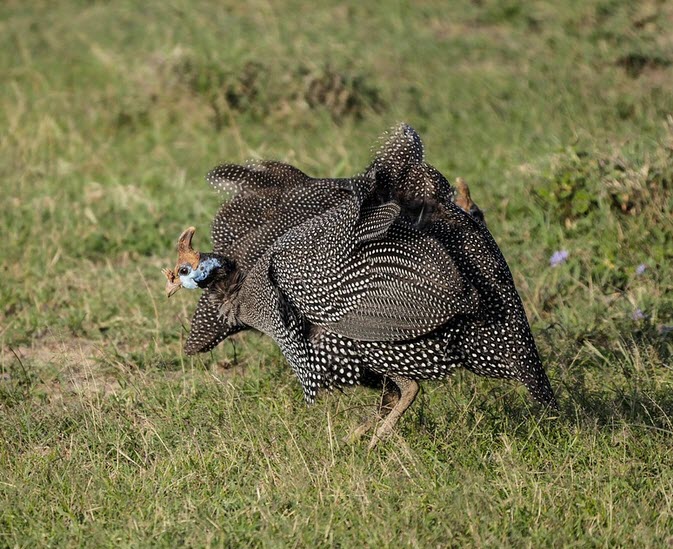Contents
There are several countries and regions in the world named Guinea or some derivative there of, so in situations where there is a risk of mix-ups, the Republic of Guinea is commonly referred to as Guinea-Conakry. (Conakry is the capital of the country.)
The Republic of Guinea is 245,836 km2 in size, which makes it slightly bigger than the United Kingdom. The population estimate for the year 2016 was almost 12.4 million people. At least two dozen ethnic groups live in Guinea, and roughly 85% of the population is Muslim. The official language is French, but indigenous languages are also widely spoken throughout the country, such as Fula, Mandinka and Susu.
Guinea achieved independence from France in 1958 and is today a unitary presidential republic.
Where is Guinea?
Guinea borders to six sovereign states, and it has roughly 320 km of Atlantic coastline to the west.
- It borders to Guinea-Bissau to the north-west.
- It borders to Senegal to the north.
- It borders to Mali to the north and east.
- It borders to the Ivory Coast to the east.
- It borders to Liberia to the south.
- It borders to Sierra Leone to the south-west.
Economy
 Total GDP (PPP): $26.451 billion (2017 estimate)
Total GDP (PPP): $26.451 billion (2017 estimate)- GDP per capita: $2,039 (2017 estimate)
- Nominal GDP: $9.183 billion (2017 estimate)
- Nominal GDP per capita: $707 (2017 estimate)
- HDI (2017): 0.459 (this is a low HDI score)
Currency: Guinean franc (GNF)
Overview
The economy of Guinea is largely dependent on two industries: agriculture and mining. It is one of the world’s main producers of bauxite.
Other notable industries are food processing (especially breweries, juice making and soft drink making) and tobacco processing.
Agriculture
Roughly 75% of the labour force works in the agricultural sector.
Examples of crops: rice, coffee beans, potatoes, and a wide range of fruits, such as oranges, pineapples, mangoes, pomegranates, and bananas. In addition to tropical fruit, Guinea also produces apple, pears, peaches, nectarines, and grapes. Strawberries are grown in vertical hydroponic systems.
Export
The only major exports from Guinea are bauxite and alumina (aluminium oxide ) .
Mining
At least 25% of the world’s identified bauxite reserves are found in Guinea. (Bauxite is the world’s main source of aluminium.) Guinea also has large known deposits of diamonds, gold, and high-grade iron ore. So far, Guineas poor infrastructure and devastating corruption have been keeping these minerals from being fully exploited. This is one of the reasons why a bulk of the diamonds mined in Guinea are mined artisanally.
Bauxite
The main actor in the Guinean bauxite industry is Compagnie des Bauxites de Guinea, which is 49% owned by the government and 51% owned by an international consortium. The company, which exports around 14 million tonnes of high-grade bauxite in an average year, holds the exclusive right to bauxite reserves in north-western Guinea through 2038.
Another example of an important bauxite miner in Guinea is Compagnie des Bauxites de Kindia, a joint venture between the government and RUSAL. The company extracts around 2.5 million tonnes of bauxite per year, and exports almost all of it to Russia and Eastern Europe.
Gold
The main gold mining operation in Guinea is a joint venture between the government and the Ashanti Goldfields of Ghana.
Société Minière de Dinguiraye (SMD) also has a large gold mining facility in Guinea.
Infrastructure
- The delivery of goods throughout the country is hampered by poor road conditions. In 2005, a new road was built to better connect Guinea with its neighbour Mali.
- Prolonged blackouts and brownouts are common. Many businesses are forced to use private power generators to ensure stable access to electricity. Guinea has great potential for hydroelectric power, but large investments would be required.
- After the 2010 election, the new government announced that they had overturned a previous agreement with China. According to the now scrapped agreement, China would have invested around 7 billion USD in infrastructure in Guinea in exchange for being a “strategic partner” for mining projects.
2004 reforms
In 2002, Guinea’s IMF-funded Poverty Reduction and Growth Facility (PRGF) was suspended by the IMF since the Guinean government had failed to meet key perform criteria. One of the notable issues was very large spending on the armed forces, which contributed to a significant fiscal deficit. In late 2004, Guinea embarked on a reform agenda with the aim of getting back the PRGF. Examples of employed changes are the floating exchange rate, relaxed price controls on gasoline, reduced government spending, and improved tax collection.
Inflation
In January 2005, the Guinea franc was trading at roughly 2550 GNF to 1 USD. In August 2016, you had to pay over 9,000 GNF to get 1 USD.
This article was last updated on: February 13, 2019
